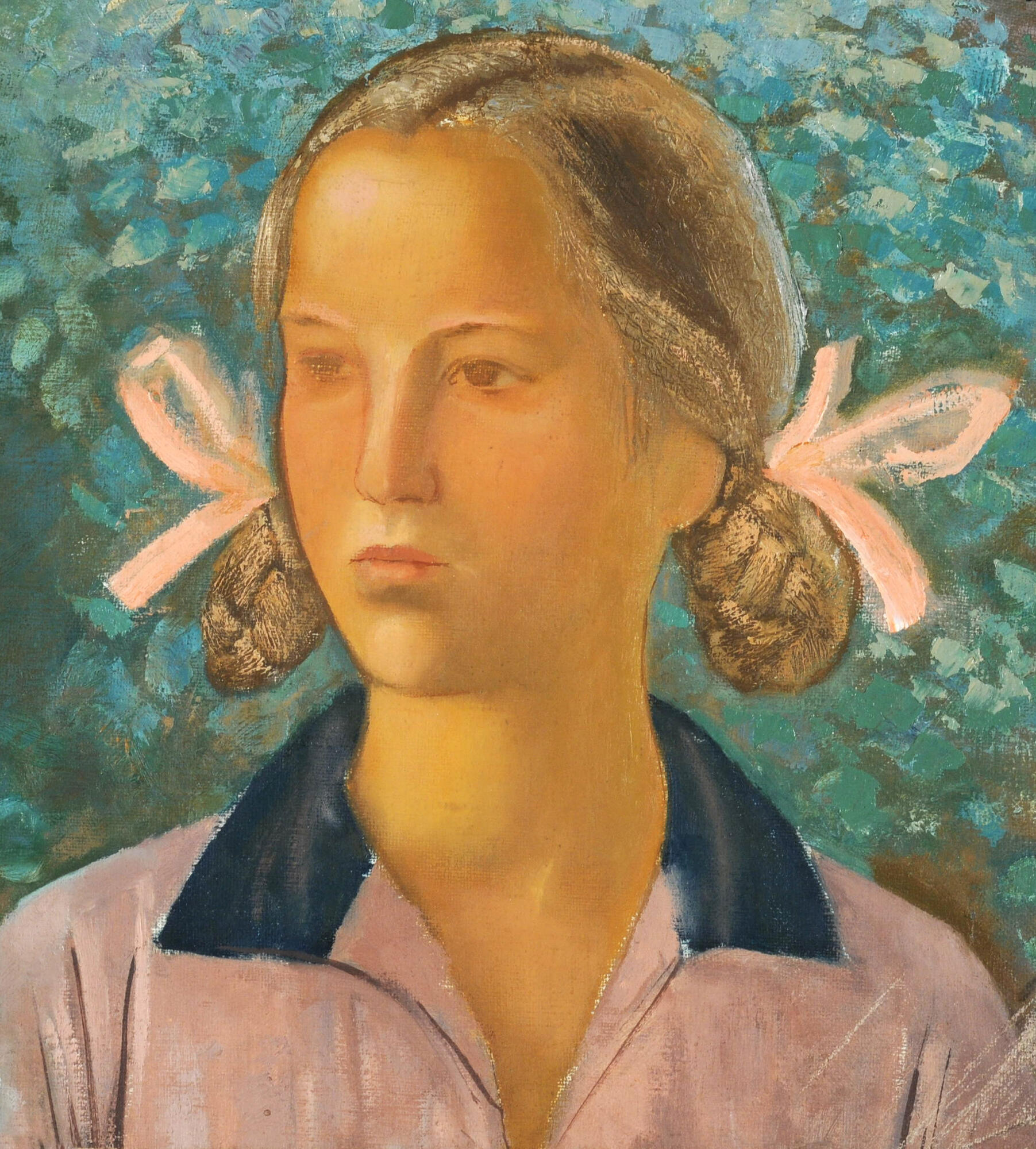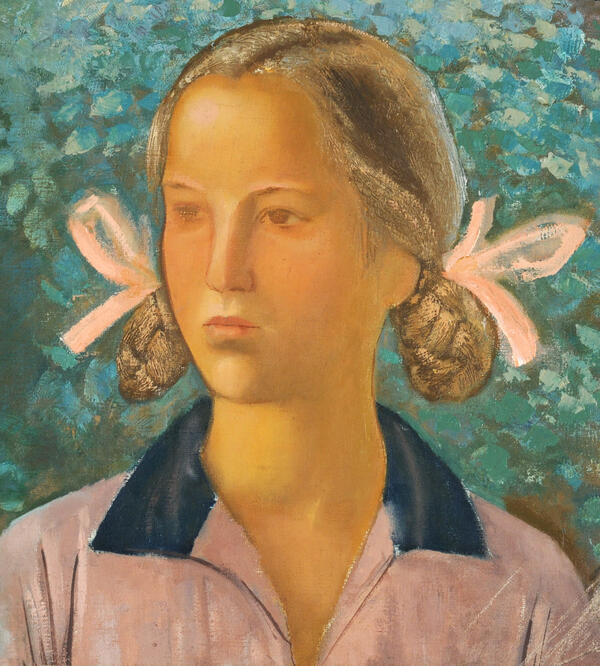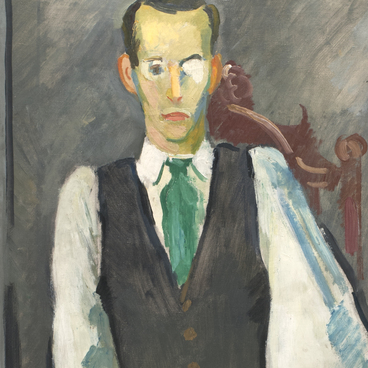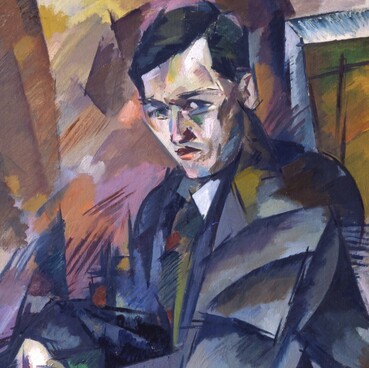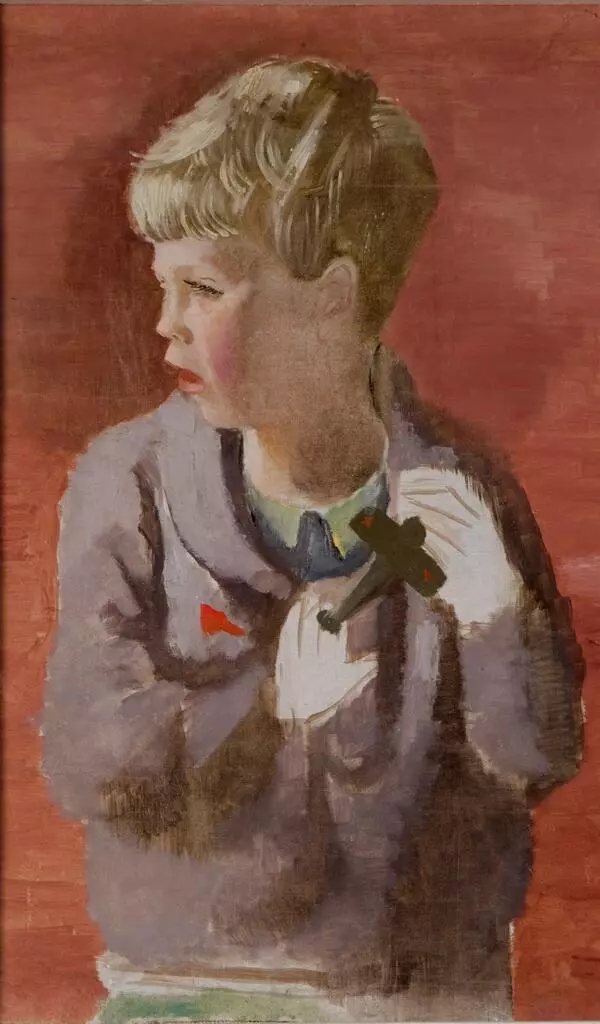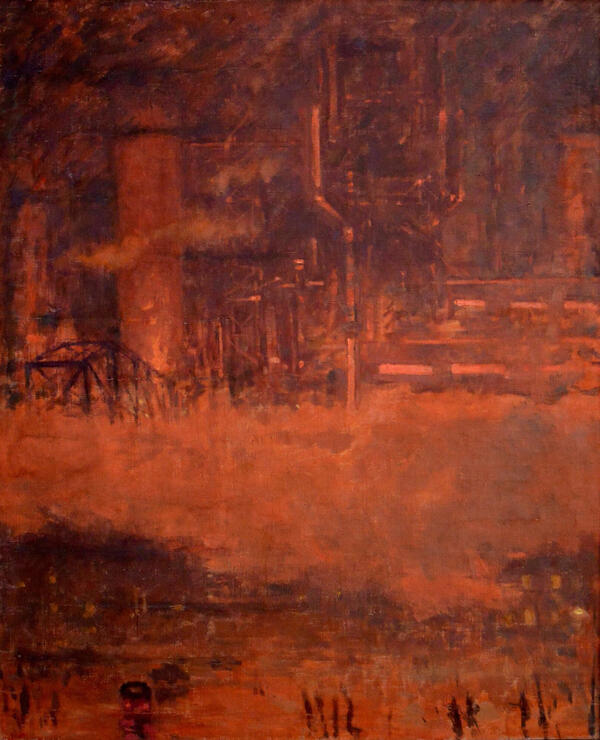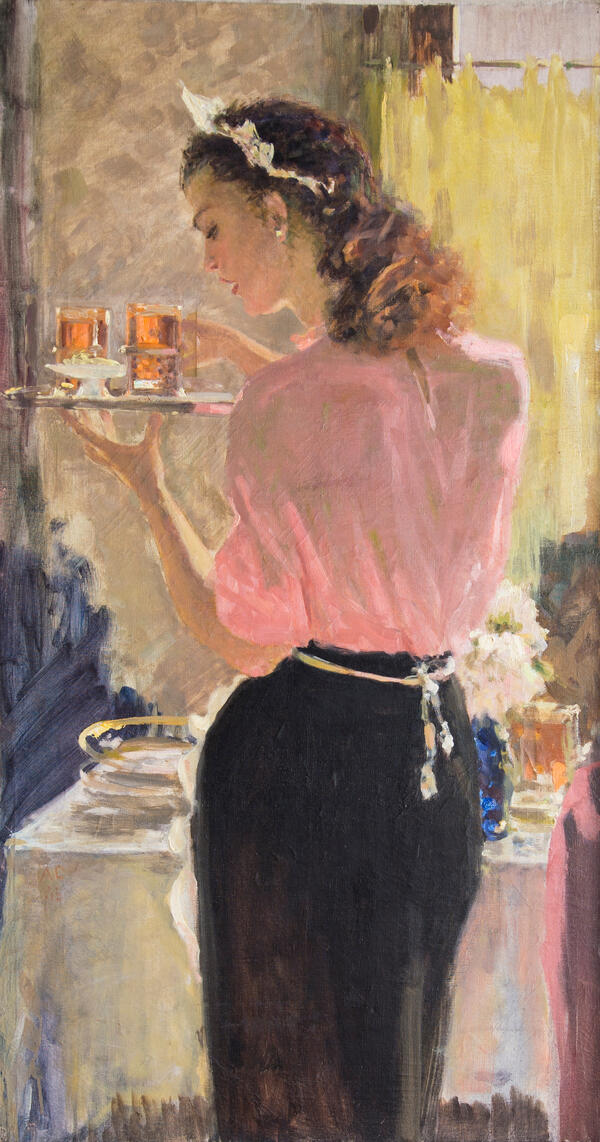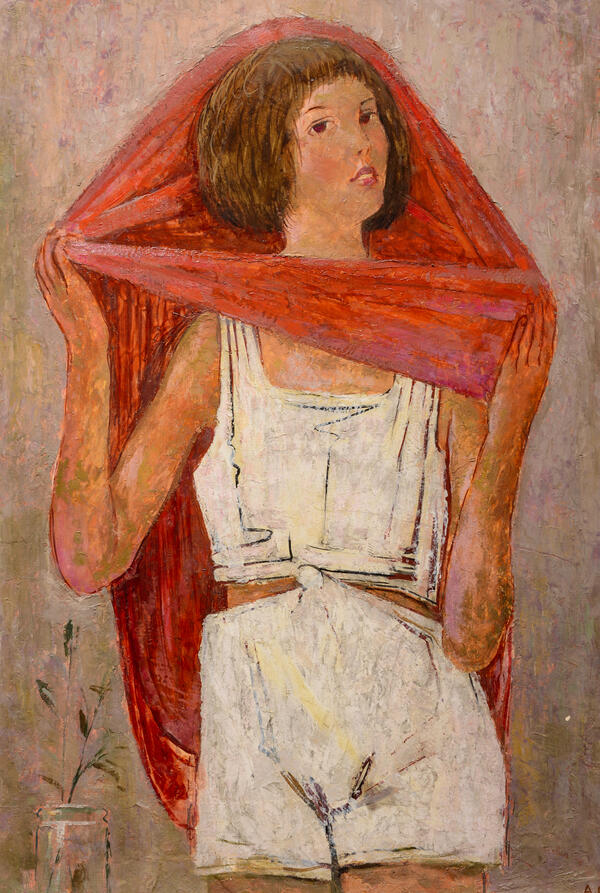Aleksander Samokhvalov (1894–1971), a Russian artist, painter and graphic artist, in his best works combined the features of symbolism and romance together with a socialist realist ideological program. He was born in Bezhetsk, Tver Province in 1894. He lived in Leningrad. The artist initially honed his art skills with Ivan Kostenko, a teacher at the Bezhetsk Nonclassical Painting School. Samokhvalov embarked on an independent creative path at a time when the modernist/avant-garde searches gradually shifted to the sphere of ‘quiet art’, or just went ‘underground’ completely. Nonetheless, just like the artists in the Easel Painters’ Association, which the Circle of Artists group was aesthetically close to, he managed to preserve the bright features of poetically deliberate symbolism in the bounds of quite official, “socially ordered” works. Samokhvalov worked successfully as a theater artist, and especially as a book illustrator.
Along with this, Samokhvalov executed a large number of completely triumphant, “totalitarian” canvases (S.M. Kirov Receives a Parade of Athletes, 1935; V.I. Lenin Appears at the All-Russian Congress of Soviets, 1939; both paintings are in the State Russian Museum; S.M. Kirov and I.V.Stalin at Volkhovstroy, 1950, private collection, London; and others). In his later years, the author strove to express his powerful potential as a romantic artist in autobiographical prose (the book My Creative Path, published in 1977; the story In the Years of the Restless Sun). Portrait of a Girl harkens back to the 1920s-1930s, during that period when Samokhvalov created images of “work and sports heroines” (Girl in a Sports Shirt, 1932; State Russian Museum; Girl with a Shot Put, 1933, State Tretyakov Gallery): images full of buoyant fanfare and, at the same time, an almost “mythological” charm; they rather represent mysterious modern goddesses, surrounded by romantic haloes.
The girl is depicted as a head-and-shoulders portrait, against a neutral background that looks like a green bush. Muted blues, pinks, and greens create a sense of tranquility and lyricism. The head of the girl is slightly turned to the right. Her eyes are directed into the distance, as if she is peering into the future. Her stare is stern and strict. This is the stare of a fully formed adult. At the same time, the gentle, still childish oval shaped by the face, and tucked braids with bows, help create the touching image of a girl with youthful, romantic aspirations in life. The format of the work, which resembles a square, focuses the viewer’s gaze on the girl’s face, and emphasizes the composition’s balance and harmony.
Along with this, Samokhvalov executed a large number of completely triumphant, “totalitarian” canvases (S.M. Kirov Receives a Parade of Athletes, 1935; V.I. Lenin Appears at the All-Russian Congress of Soviets, 1939; both paintings are in the State Russian Museum; S.M. Kirov and I.V.Stalin at Volkhovstroy, 1950, private collection, London; and others). In his later years, the author strove to express his powerful potential as a romantic artist in autobiographical prose (the book My Creative Path, published in 1977; the story In the Years of the Restless Sun). Portrait of a Girl harkens back to the 1920s-1930s, during that period when Samokhvalov created images of “work and sports heroines” (Girl in a Sports Shirt, 1932; State Russian Museum; Girl with a Shot Put, 1933, State Tretyakov Gallery): images full of buoyant fanfare and, at the same time, an almost “mythological” charm; they rather represent mysterious modern goddesses, surrounded by romantic haloes.
The girl is depicted as a head-and-shoulders portrait, against a neutral background that looks like a green bush. Muted blues, pinks, and greens create a sense of tranquility and lyricism. The head of the girl is slightly turned to the right. Her eyes are directed into the distance, as if she is peering into the future. Her stare is stern and strict. This is the stare of a fully formed adult. At the same time, the gentle, still childish oval shaped by the face, and tucked braids with bows, help create the touching image of a girl with youthful, romantic aspirations in life. The format of the work, which resembles a square, focuses the viewer’s gaze on the girl’s face, and emphasizes the composition’s balance and harmony.
